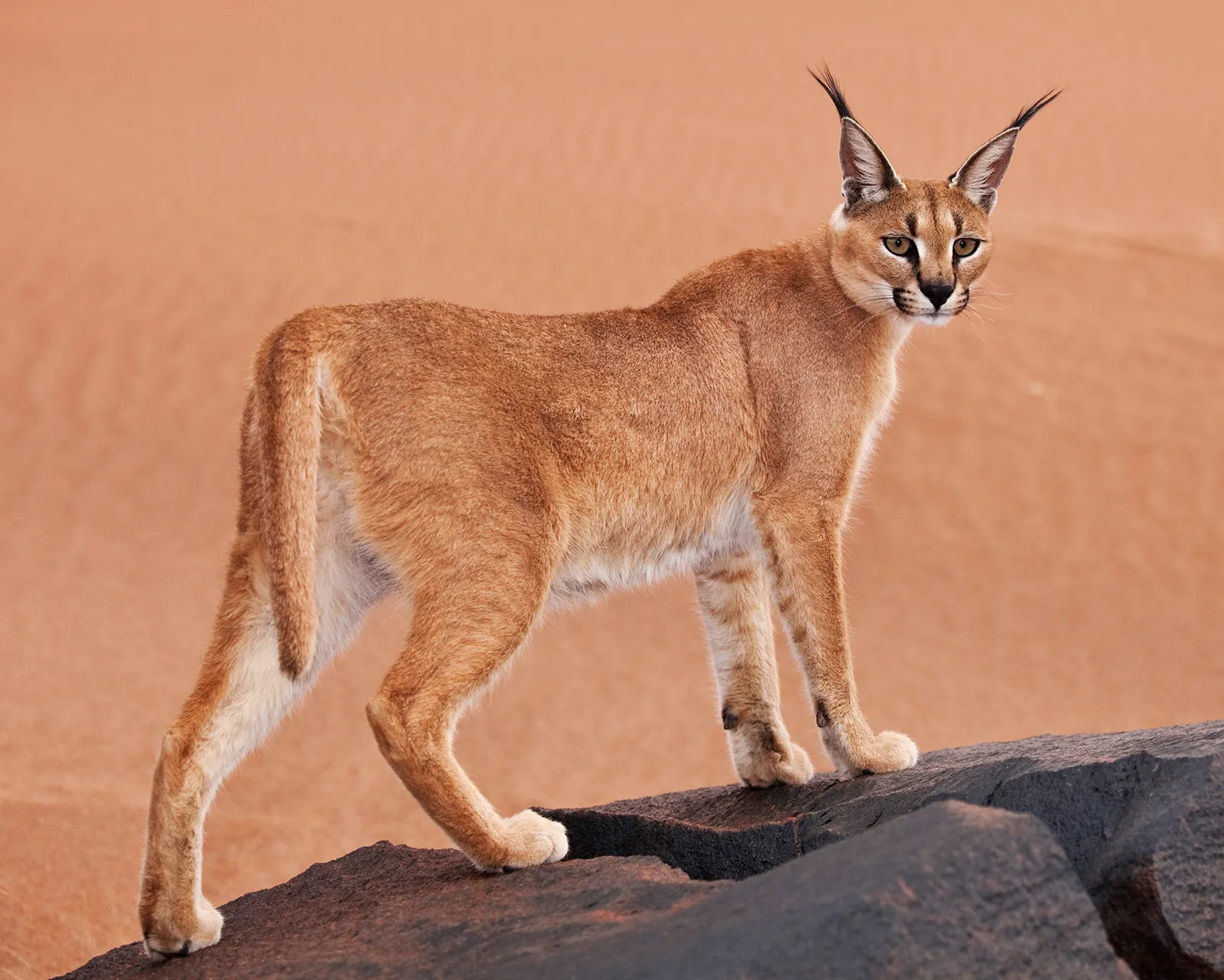Important Facts For Prelims
Asiatic Caracal
- 17 Sep 2022
- 5 min read
Why in News?
Caracal, which was used by India’s nobility in the sport of coursing like the cheetah, is struggling to survive, although both species had a similar distribution in the past.
What are the Key Points of Caracal?
- Scientific Name: Caracal Caracal Schmitzi
- About:
- The Asiatic caracal is a medium-sized and locally threatened cat species, which has been widely reported to be on the brink of extinction in India.
- It is also known by its persian name Siyahgosh or ‘black ears’.
- Distribution:
- They are found mostly in Rajasthan, Gujarat and Madhya Pradesh and are located in Kutch, the Malwa Plateau, the Aravalli hill range.
- Besides India, the caracal is found in several dozen countries across Africa, the Middle East, Central and South Asia.
- Habitats:
- It occurs in semi-deserts, steppes, savannah, scrubland, dry forest and moist woodland or evergreen forest.
- It prefers open terrain and drier, scrubby, arid habitats and needs cover.
- Threats:
- Large-scale hunting, illegal trading and loss of natural habitats are considered significant threats to the species.
- Protection Status:
- IUCN Red List: Least Concern
- Wildlife Protection Act, 1972: Schedule I
- CITES: Appendix I
- Conservation Initiatives:
- In 2021, the National Board for Wildlife and the Ministry of Environment, Forest and Climate Change included Caracal in the list of Critically Endangered species under critically endangered species recovery programme.
What is a Species Recovery Programme?
- It is one of the three components of the Integrated Development of Wildlife Habitats (IDWH).
- IDWH was started in 2008-09 as a Centrally sponsored Scheme. It is meant for providing support to protected areas (national parks, wildlife sanctuaries, conservation reserves and community reserves except tiger reserves), protection of wildlife outside protected areas and recovery programmes for saving critically endangered species and habitats.
- There are 22 species on the critically endangered species recovery programme.
- Snow Leopard, Bustard (including Floricans), Dolphin, Hangul, Nilgiri Tahr, Marine Turtles, Dugongs, Edible Nest Swiftlet, Asian Wild Buffalo, Nicobar Megapode, Manipur Brow-antlered Deer, Vultures, Malabar Civet, Indian Rhinoceros, Asiatic Lion, Swamp Deer, Jerdon’s Courser, the Northern River Terrapin, Clouded Leopard, Arabian Sea Humpback Whale, Red Panda and Caracal.
UPSC Civil Services Examination Previous Year Question (PYQ)
Q. Consider the following: (2012)
- Black-necked crane
- Cheetah
- Flying squirrel
- Snow leopard
Which of the above are naturally found in India?
(a) 1, 2 and 3 only
(b) 1, 3 and 4 only
(c) 2 and 4 only
(d) 1, 2, 3 and 4
Ans: (b)
Exp:
- Black-necked crane is commonly found in Tibetan and trans-Himalayan region. In winters they migrate to less colder regions of Indian Himalayas. It has been evaluated as Near Threatened in IUCN list. Hence, 1 is correct.
- Cheetah is an extinct species in India. They have gone extinct during the pre-independence era mainly due to hunting. By the beginning of the twentieth century, the species was already heading for extinction in many areas. The last physical evidence of the Asiatic cheetah in India was in 1947, in Eastern Madhya Pradesh or Northern Chhattisgarh. It has been evaluated as vulnerable in IUCN list. Hence, 2 is not correct.
- Flying Squirrels are found in Western Ghats, Northeast and other Indian forests. It has been evaluated as least concern in IUCN list. Hence, 3 is correct.
- Snow leopard, listed as vulnerable in IUCN list, is found in the Himalayan ranges. Hence, 4 is correct.
- Therefore, option (b) is the correct answer.







